Winter Vol 1
January 2019
Reflections on a Momentous 2018 In Conservation Treatments
and Disaster Recovery Projects
Dear Longtime Clients, Colleagues, Friends, and Family,
This past year was a marked turning point in many ways, I felt compelled to share a bit of a summary of our wild ride…
From the very start 2018 was off to a break neck hectic pace. The Fall of 2017 Napa/Sonoma wildfire disaster recovery projects and collection inventories were already crowding and taking over our two main studio locations in the western Richmond District of San Francisco. We had taken on nearly 45 individual projects by January, when the Thomas wildfire and mudslide consumed great swaths of Ventura and Santa Barbara.
Our studios are multi-disciplinary, our staff specializing in numerous materials and working with textiles, objects, sculpture, paintings, decorative arts, books/paper, some furniture–and most particularly mold, microbial and pest remediation and abatement, as well as, Disaster Recovery from fire soot, smoke and ash particulates. We have for the past twenty years worked on a large variety of artworks and objects, with individual clients, and with some larger collections. However this past year brought a whole new scale and scope to project managing in the disaster recovery efforts that followed these horrific incidents.
This was an emotional experience for myself, staff, and interns. We were called on-site to the scorched harrowing scenes, one after another, to assess the damages, take inventories, and coordinate the transport and deliveries of dozens of collections for months. This meant regularly driving through burnt out and utterly destroyed neighborhoods, interfacing with clients who had been traumatized and had so much to cope with. These were much more than your usual conservation, stabilization and client relationship projects.
I invited Scott Haskins of Fine Art Conservation Inc. (FACL) in Santa Barbara, CA and his staff to collaborate with us in a mutual partnership on about a dozen projects following the Thomas wildfire and mudslide in Ventura, as the inundation of insurance claims swamped us by mid January. Our partnership and collaboration with FACL was a tremendous success, and a testament to conservators in private practice working together!
During the past 15 months, between Northern and Southern California, ACdR and FACL recovered more than 2500 individual fine art works, objects, decorative arts, and furniture from smoke, soot, ash, mud and microbes for at least 60+ client projects with large museum quality collection inventories.
It was clear early on that we needed more workspace and safe, clean storage—fast. As luck would have it, we were able to secure a lease to the commercial space right next door to our existing secondary “dirty studios” instantly doubling our work area, this was awesome for the next six months. By the Spring we new we had outgrown our cumulative three individual studios in the neighborhood, and the search began for a new longterm larger workspace, not an easy task in San Francisco.
By June ACdR purchased a property in the western Richmond District of SF, that is our new conservation studios center, allowing us to remain in our longtime neighborhood. We had to organize, pack-up, and move three studio locations, all our materials, equipment and 50+ concurrent ongoing projects and resettle immediately right back into the swing of things—quite the finely choreographed and orchestrated juggling act.
Now after all these years everyone and everything is finally all under one roof! The new facility hosts two floors with over 3,000 sq. ft. to accommodate our multi-disciplinary practice and individual departments, in addition to climate controlled large scale collections storage, and a larger CO2 Anoxic Chamber Tent than we had at the previous studio location. Our new tent has six shelving units, and can hold 100’s of artworks, many large objects or furniture pieces at once.
We’d like to share our appreciation and gratitude for our partnerships with the many professional property remediation and restoration companies we’ve worked with over the years, but most especially this last year—Belfor, Restoration Management, DRI,and ServPro.
We utilized our local professional fine art handlers a great deal this year, a very thankful shout out to Connect Art International in San Francisco, and ARTEX, now Crozier Fine Arts in Los Angles.
Another big thank you to our co-collaborators at Sterling Art Services, who have worked so closely with us on many beautifully conceptualized, museum quality custom mounts and framing projects. As well as the founders of the indispensable App CatalogIt, they worked hand in hand with us to beta test this game changing App, to custom adapt their new application for condition reports, terminology and collection tracking for big projects in our studios.
I want to thank my longtime staff of conservators and conservation technicians, and all the pre-program and post graduate interns that worked long hard hours to salvage and rescue such a vast multiplicity of materials and mediums with the many objects that have past through our collective hands this last year.
We are looking forward to sharing these experiences in further detail with our professional peers, in future contributions to papers, presentations and potential publications addressing both the treatments and scope of project managing disaster recovery in the wake of large concurrent wildfires.
Please let us know if we can be of assistance with any of your conservation, cultural heritage preservation, or disaster recovery needs in the years ahead.
We are experienced, caring, do good work, listen intently, observant, and available.
Warm Regards, Elise Yvonne Rousseau
Principal Conservator and Founder
ACdR Conservation, atelier established 1999

Our former secondary “Dirty Studios” with a large ethnographic textile collections that had been treated in our CO2 Anoxic Chamber for a pest infestation. Gemma Bru Ballarà, intern ~ Barcelona, Spain
Some of The Wonderful Artworks and Objects We’ve Worked On…
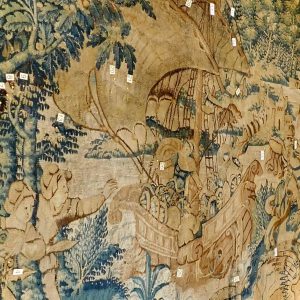
Medieval & Renaissance Tapestry Hearst Foundation Religious Textiles & Objects
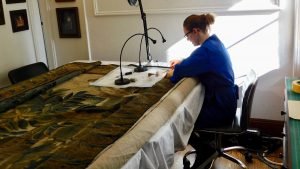
Charlotte Michel, intern ~ Paris France
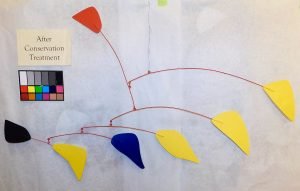
Alexander Calder Mobil, 1965:After Comprehensive Conservation, Stabilization, Cleaning, and Repair Treatments.

Conservation Treatment Photo Treatment in Progress: original color pigment analysis, and color matching for in-painting and re-touching.
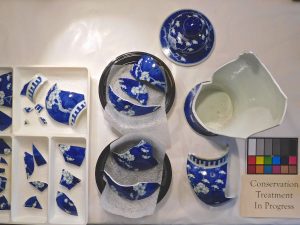
19th c. Chinese Porcelain Canister Urn: Complex Object Repairs, and Reconstruction
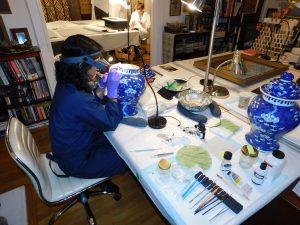
Conservation Treatment In Progress: In-fills with Hand Painted Re-touching. Tanya Nakamoto, Object’s Conservator ACdR Conservation Technician
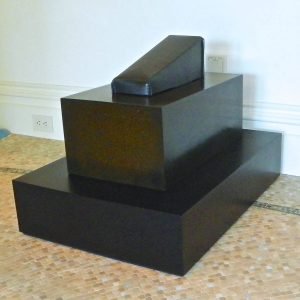
Designed and Fabricated a Custom Bronze Pedestal Support Base for an Alberto Giacometti Sculpture.
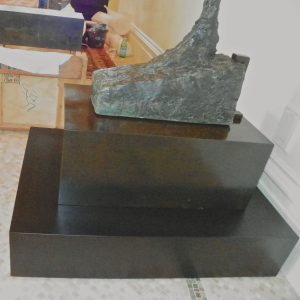
Seen here with the Giacometti sculpture foot, situated and secured onto the new base.
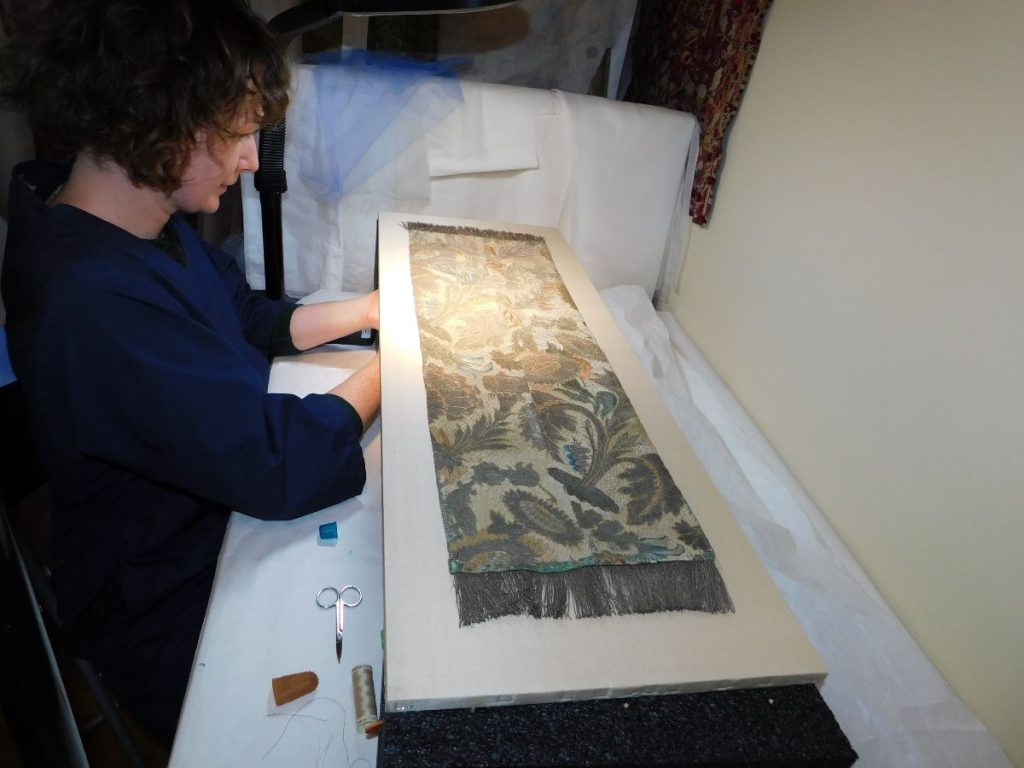
French Baroque silver metallic silk brocade panel, with silver braided twist fringe. Historic Religious object, Hearst Foundation Collections–cleaning, stabilization, hand sewn repairs and display mounting–with custom framing. Madeline McLeod, Intern ~ Victoria, Texas
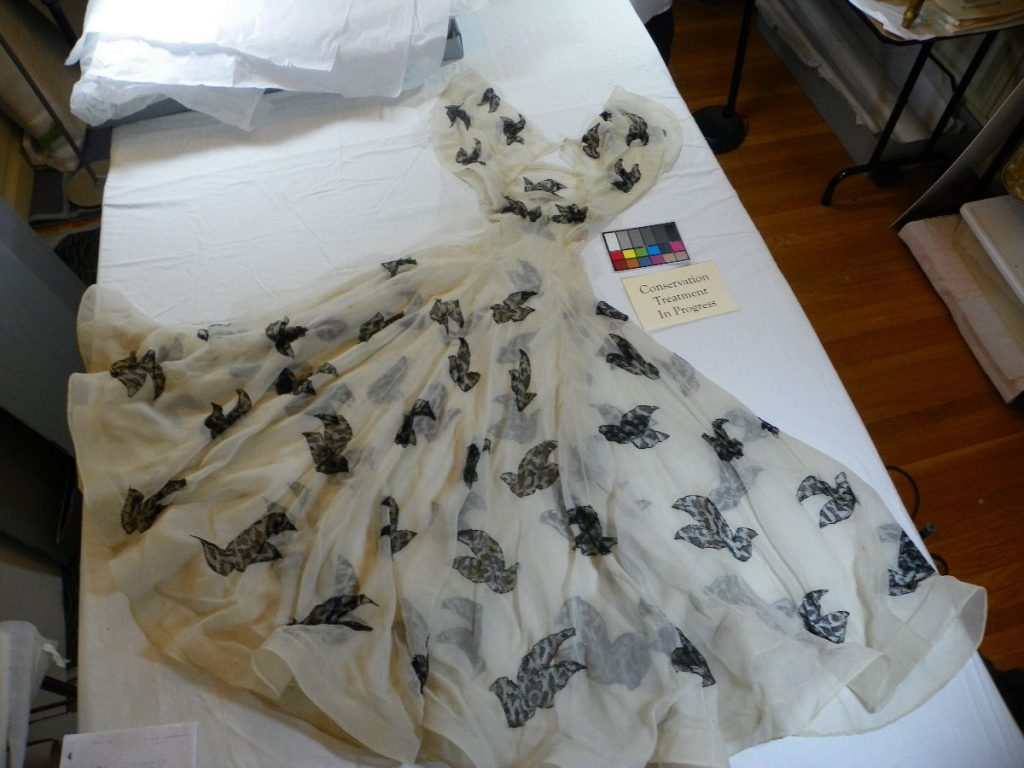
Historic Haute Couture Dress Collections: Madame Vionnet gown circa 1930, sheer silk organza, Chantilly lace doves, with horse hair interior structure hemline.

Isolated cleaning and stain removal on silver metallic glass bugle beaded silk crêpe dress. Jean Patou, Paris, France, circa 1926. Elise Yvonne Rousseau, Principal Conservator ACdR
New Tools and Technology in Our Labs
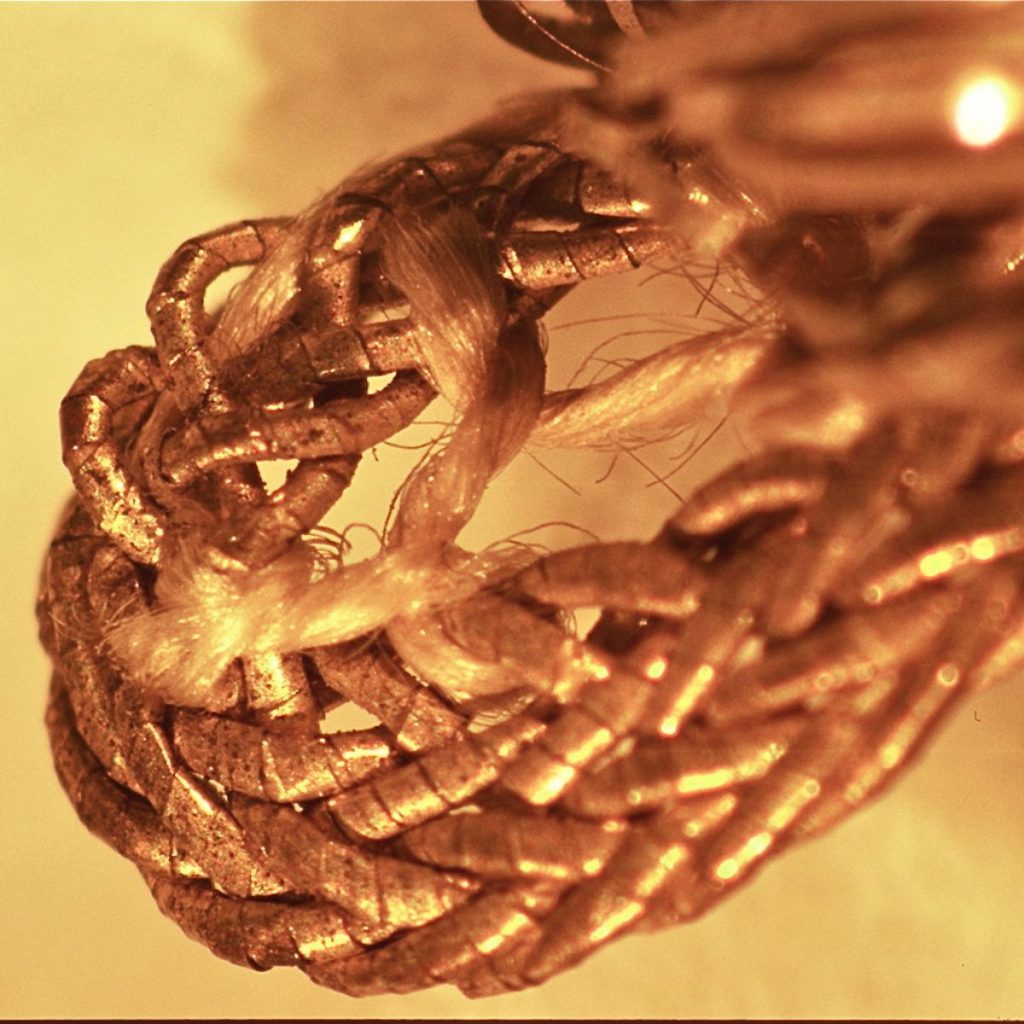
AmScope ~ Stereo Microscope and Digital Camera with UV Light: This large swing arm microscope can reach over large paintings and objects to capture images with various lens attachments and light settings—for fiber and pigment analysis, as well as cross section sampling and testing.
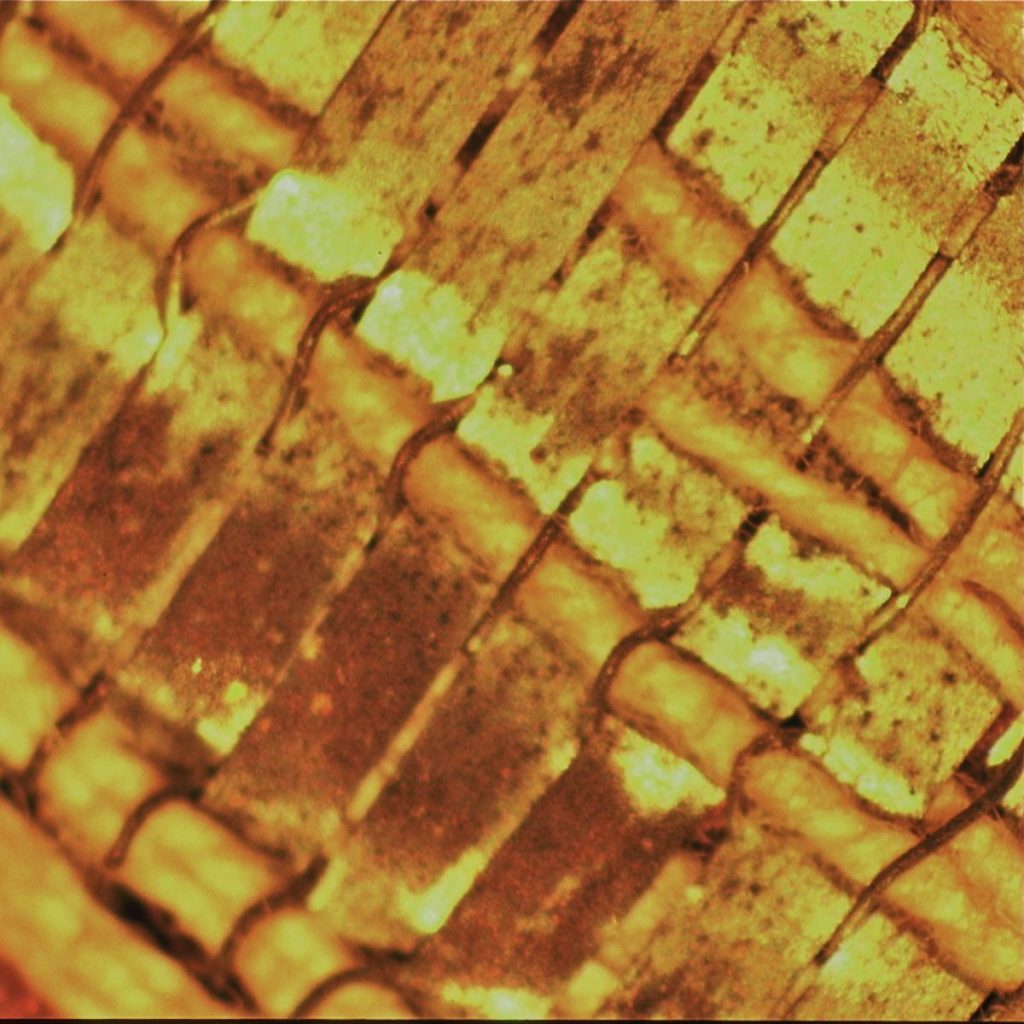
Detail image brocade trim from 18th c. Chasuble, Spanish Mission Vestment: at 10×20-4.5 woven metallic plating and wool yarns–with visible surface corrosion.

FLIR ~ Infrared thermal dynamic Imaging Camera: for capturing photo documentation of paintings, pigments, ceramics, porcelain, glass, and other materials for analytical study.
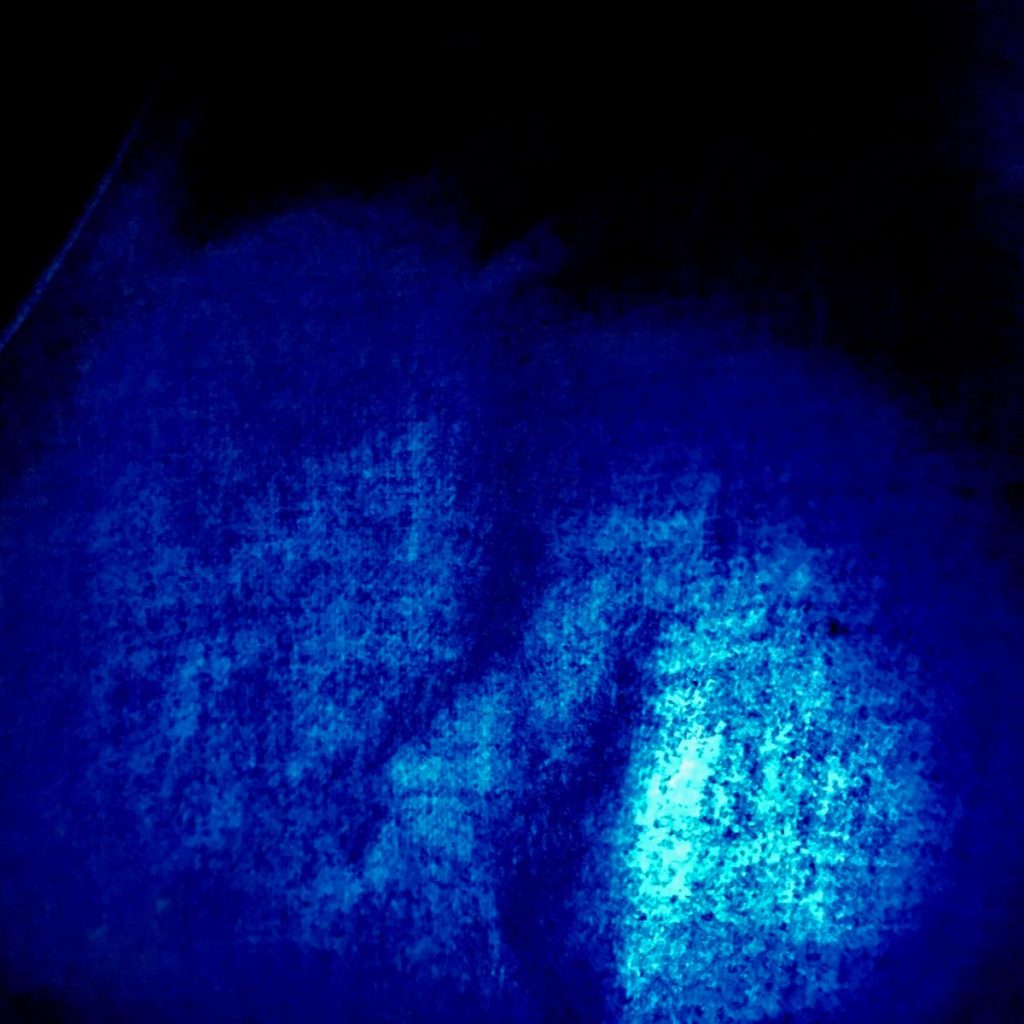
Stereo microscope image with UV light revealing adhesive residue particles imbedded in wool flannel cellulose fibers.

Wool fibers under Ultra Violet light capturing adhesive residues from an iron patch circa 1951. Historic Baseball Uniform jersey, detail of sleeve.
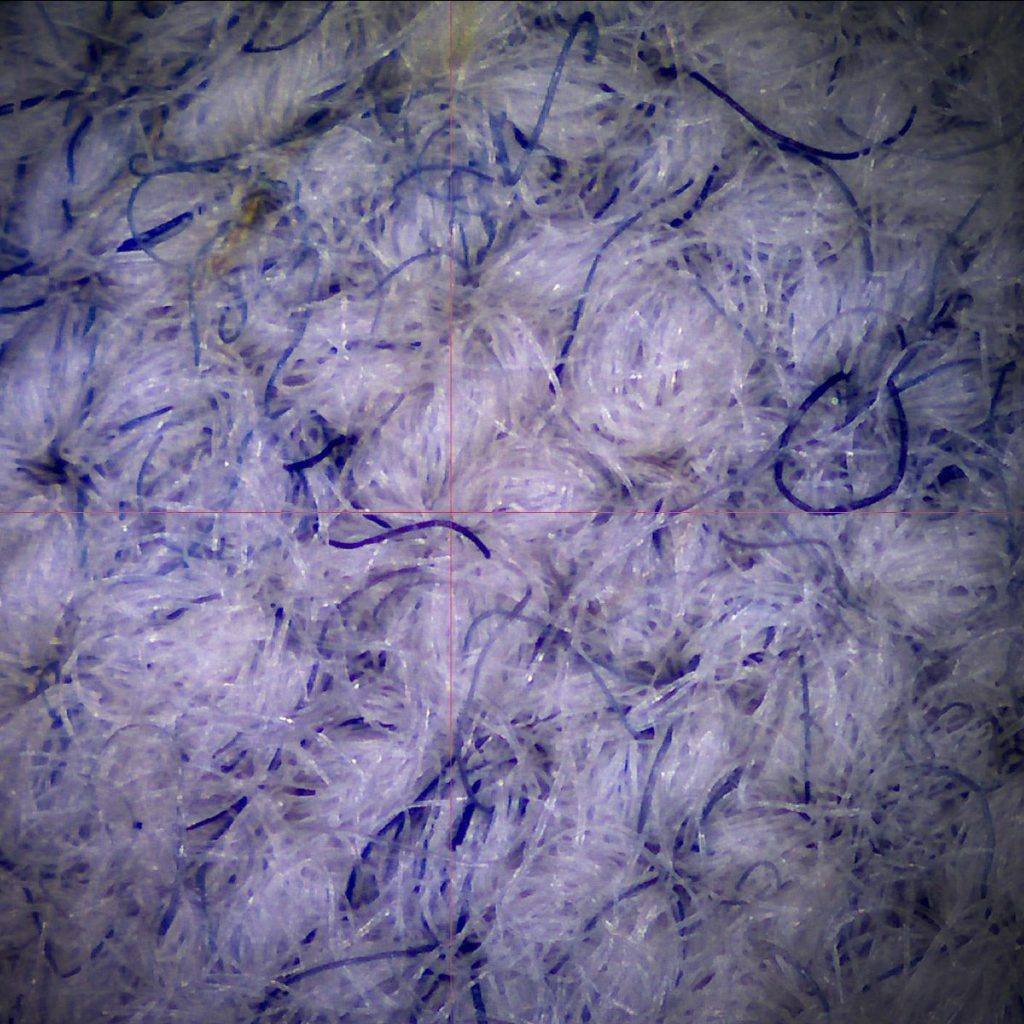
Fiber analysis under magnification. Identifying previous needle-punch entry end exit holes for to understand possible or potential alterations.
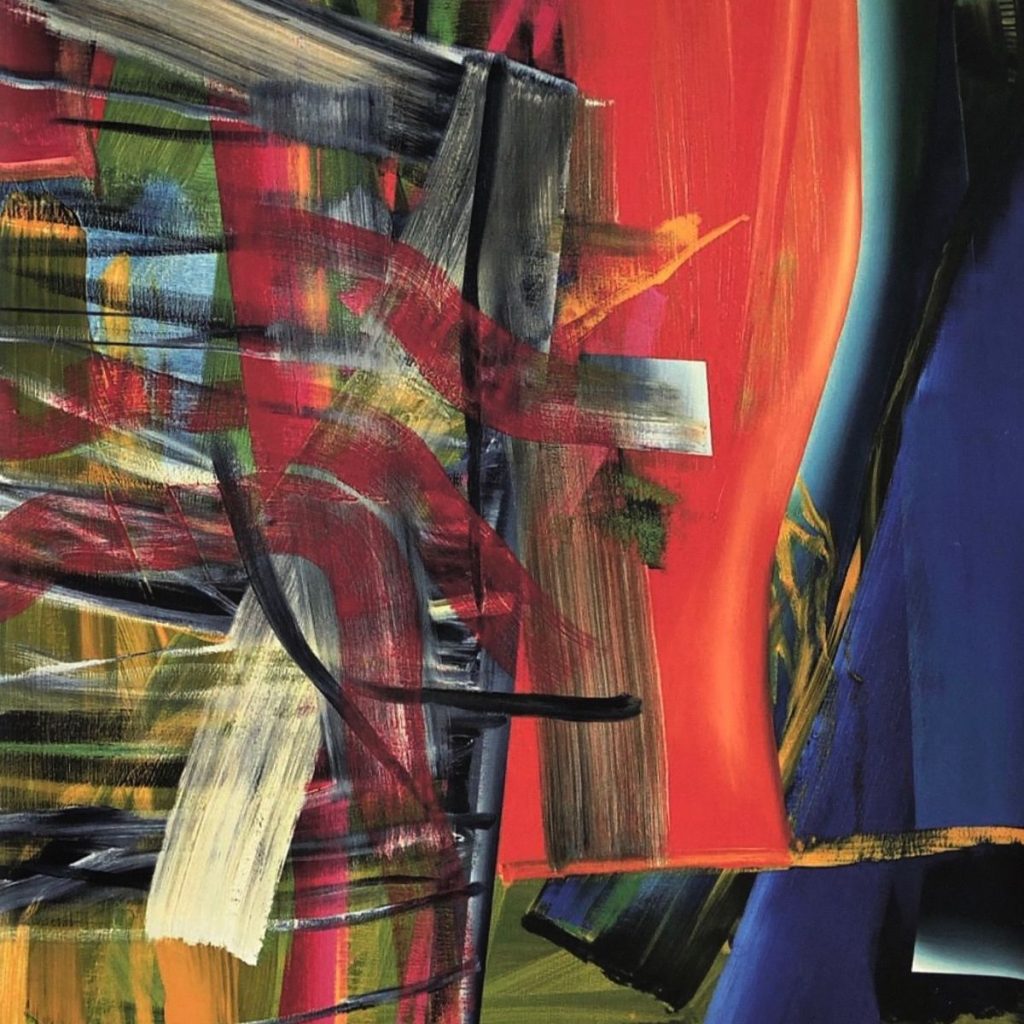
ID-Stretch Color Spectrum Imaging: This photo documentation processes images in the full color spectrum into “x-ray like” high contrast images to reveal potential areas of highlighted over-painting(s) and previous repairs.
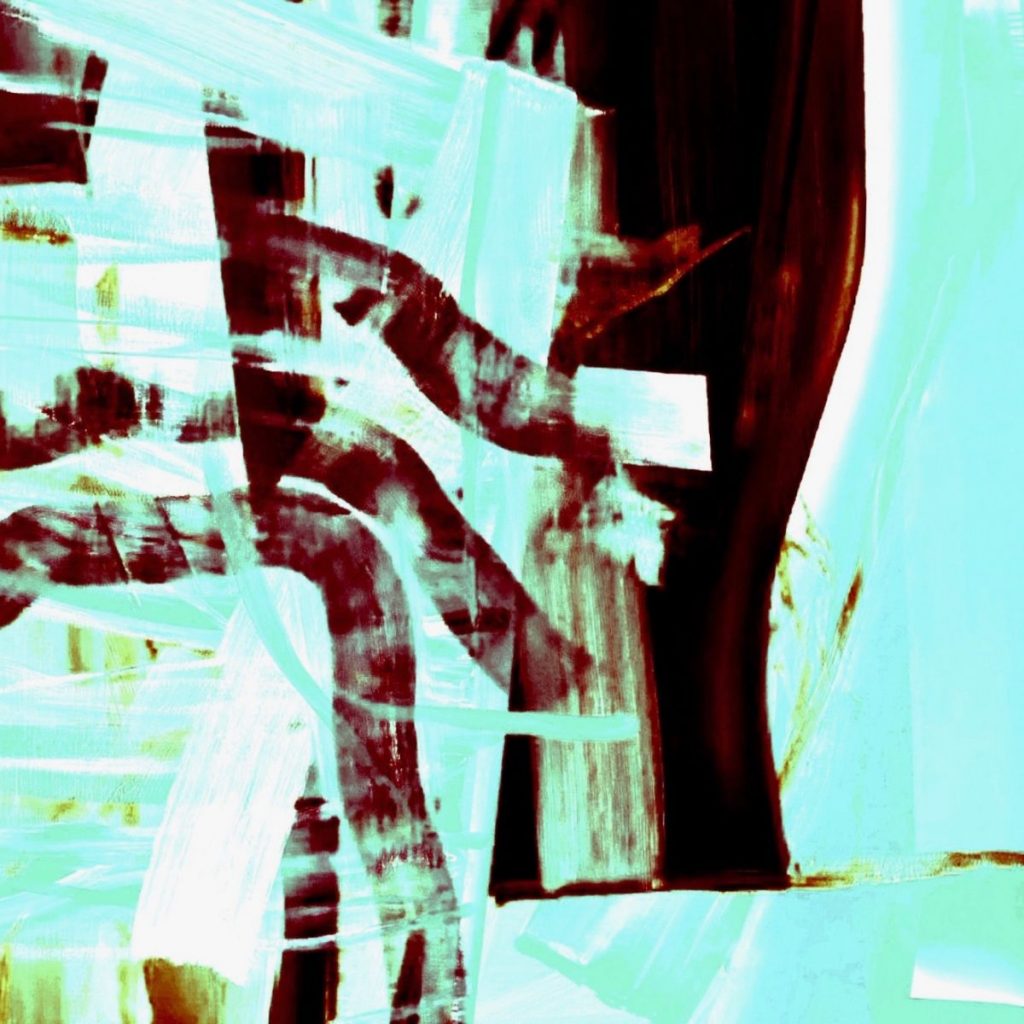
Gerhard Richter, Moving Underground, 1983, acrylic on canvas
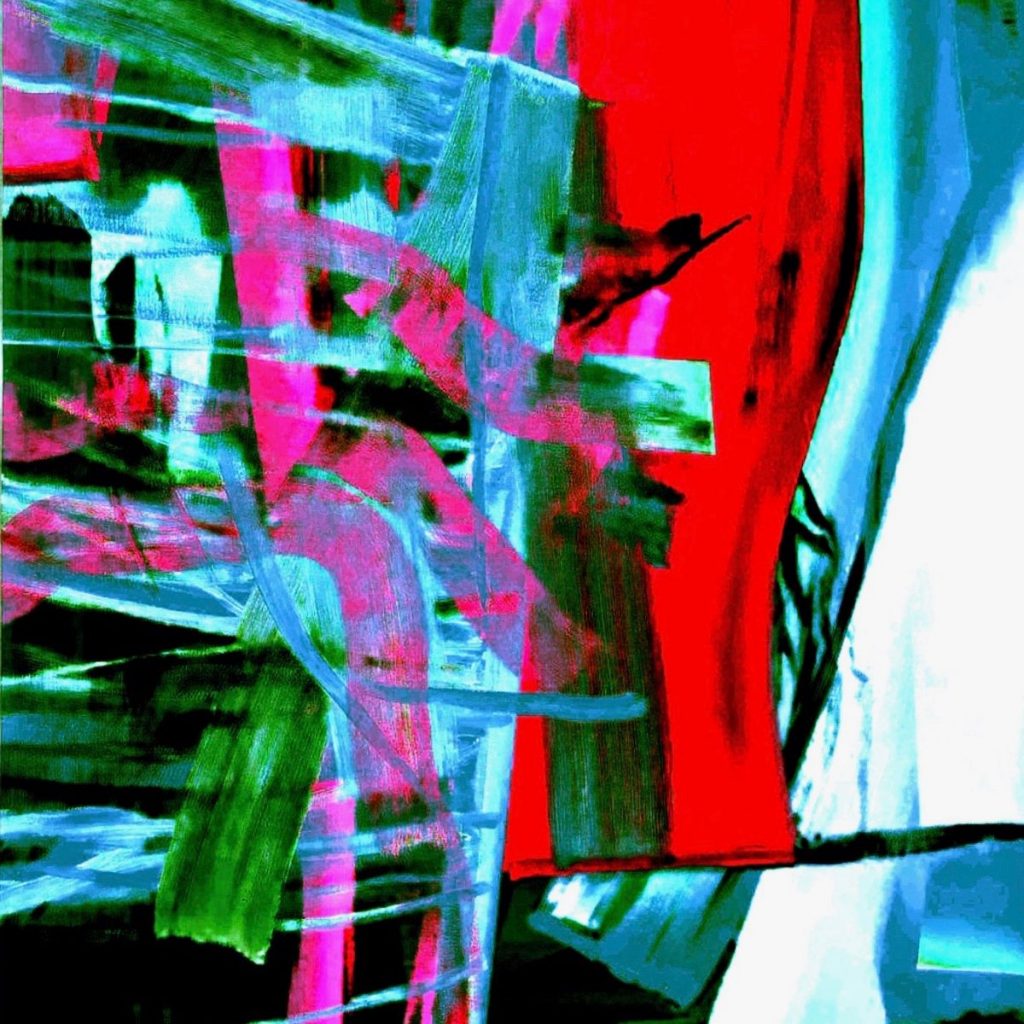
The available enhancements are: CRGB (pink/reds), YDT (general contrast), YRD (orange/reds), YBK (blacks), YRE (reds), YYE (yellows), YWE (whites), and RGB0 (blue/reds).
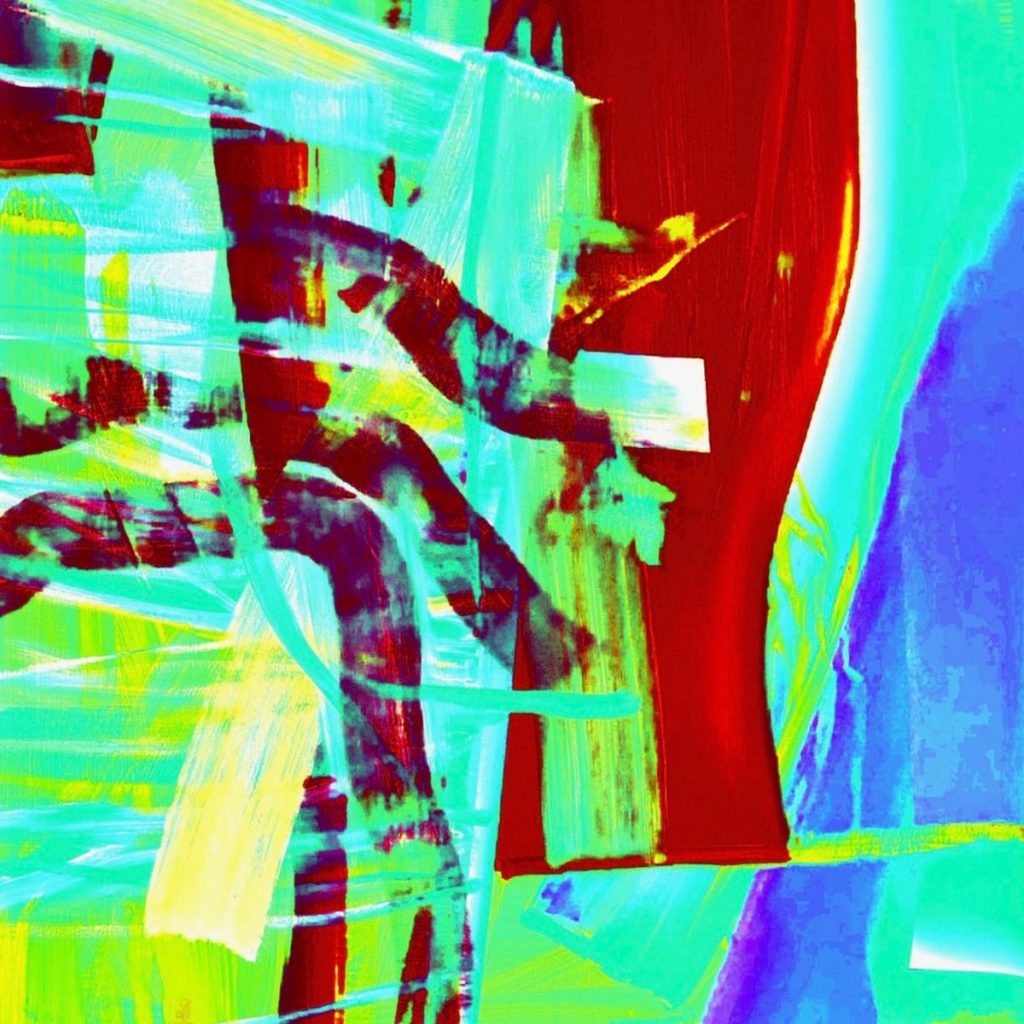
The available enhancements are: CRGB (pink/reds), YDT (general contrast), YRD (orange/reds), YBK (blacks), YRE (reds), YYE (yellows), YWE (whites), and RGB0 (blue/reds).

An exterior view of one of our oxygen deprivation CO2 Anoxic Chamber Tents, at fully expanded inflation. Our tent cycles run for various period from 23 days to 7 weeks, depending on wether we are treating collections for pest infestations and abatement, mold and microbial remediation, or smoke, soot particulate and odor removal. We make custom bubbles in any shape and size.
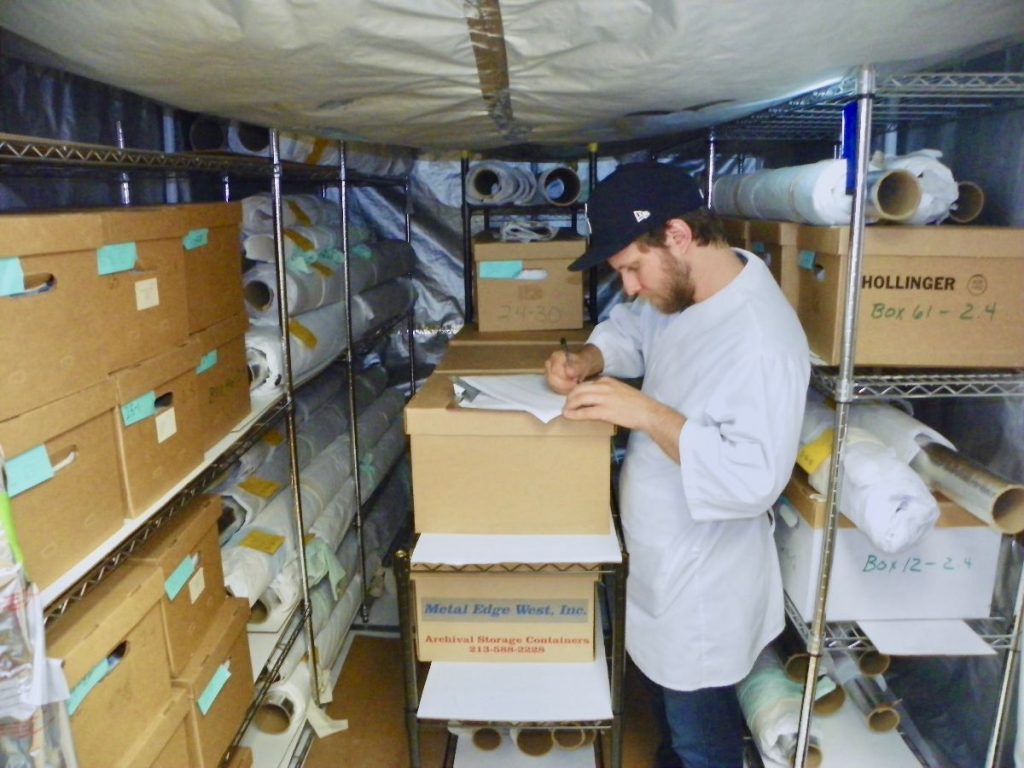
Interior view of one of our CO2Anoxic tent chambers with shelving units. This tent run treated an inventory of rolled textiles, and boxed hat collections for concomitant pest and mold infestations. Daniel Schwartz, Intern ~ Seattle, Washington

On-site condition assessment for an active mold and microbial outbreak in an historical county records archive. Sample testing with ATP Sure Snap swabs. Charlotte Michel, Eleanor Vallier ~ Interns and Elise Yvonne Rousseau
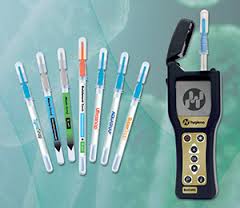
ATP Bioluminescent Swab Sampling Sure Snaps and our Hygena handheld CFU/RFU active colony forming microbes testing device.

A 19th c. French master painting with an extreme microbial infestation in an active blooming cycle—resulting from a water incursion incident.
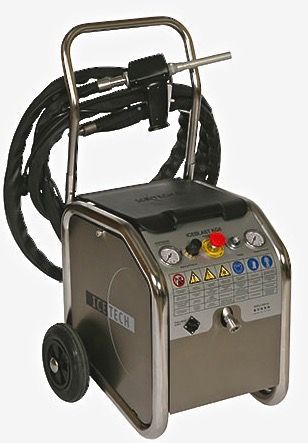
CO2 Dry Ice Dusting Machine, can assist with the safe and gentle removal of microbial cellular detritus, post CO2 Anoxia treatment.
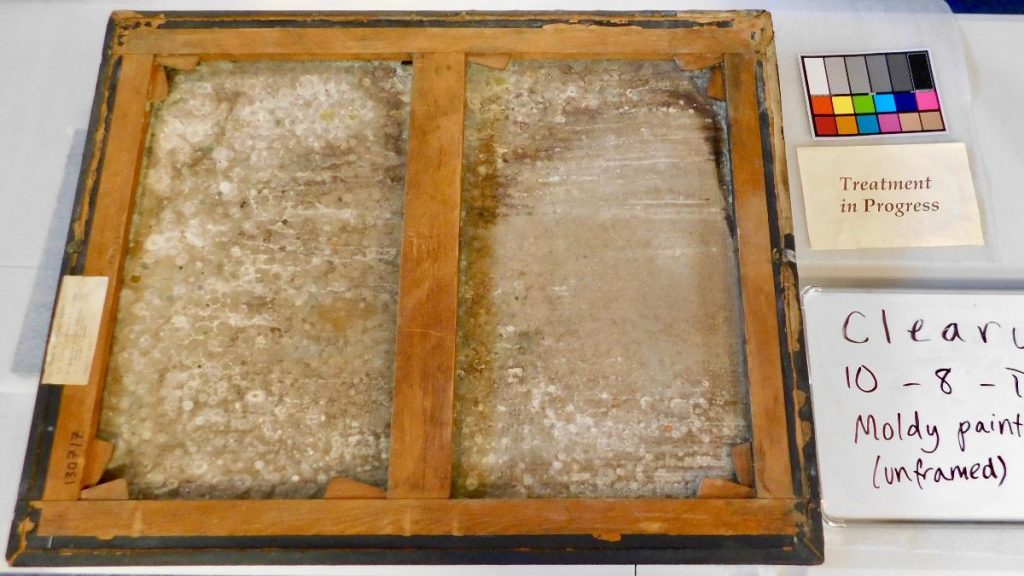
Treatment in progress, post CO2 Anoxia, and following steps with detailed micro-hepa vacuuming to removed the deceased surfaced flora, hyphae, and branching mycelium networks.
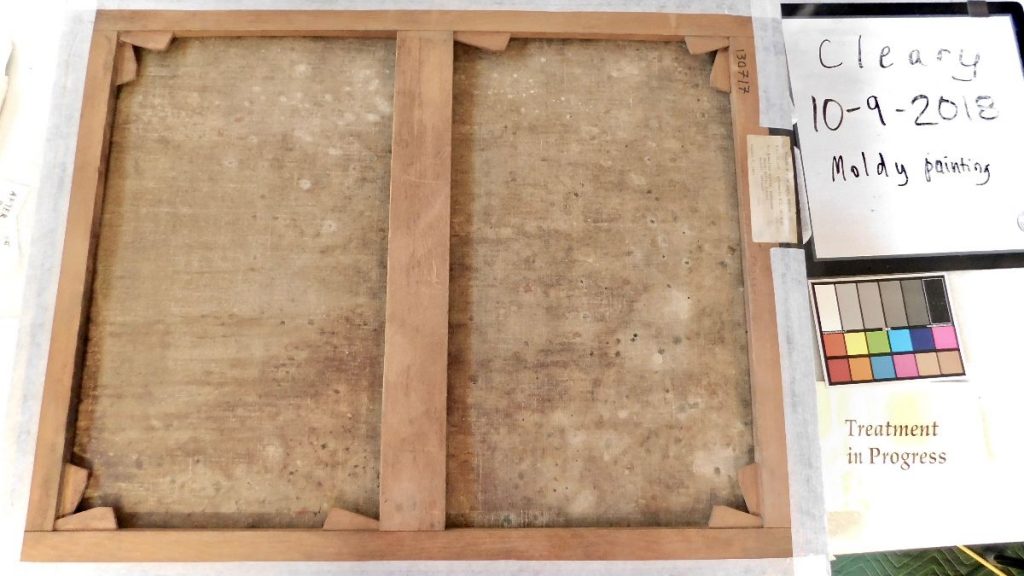
Treatment in progress, seen after surface cleaning with an antiseptic solution for continued desiccation.
What We Are Looking Forward To…

- Working with our clients to provide comprehensive preventative measures for future disasters and mitigation planning for both private and public collections, in California’s “New Abnormal” climate change.
- Offering our unique CO2 Anoxia Oxygen Deprivation and Desiccation Chamber services, along with ATP Bioluminescent Swab Sampling for active microbial CFU/RFU testing.
- Guest Lecturing and Co-instructing a class this semester at LMU ~ Layola Marymount University on textile conservation and collections care, focusing on the library and archive del Valle Vestment collection.
- Continuing to mentor and educate pre-program and post-graduate interns from around the globe in our annual hands on practicum program.
- Enjoying the expanded flexibility and capacity of our new workspace!
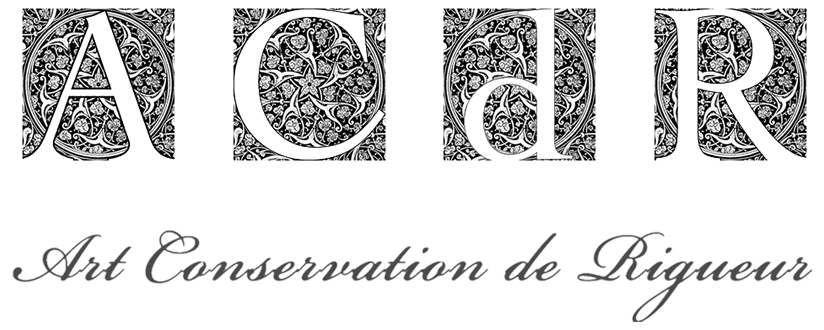
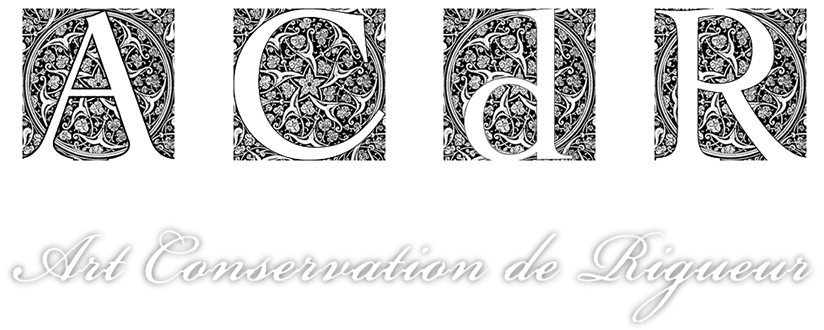
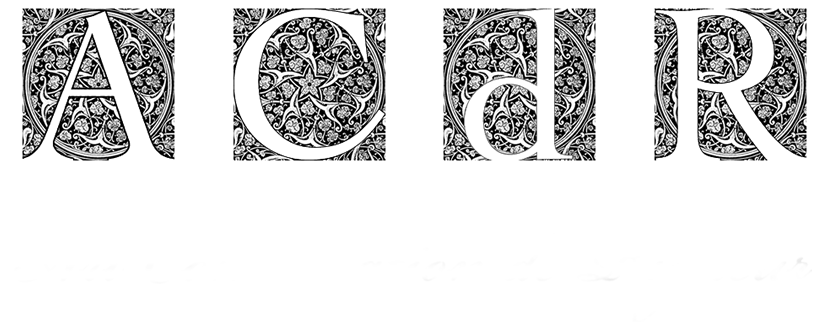

Recent Comments